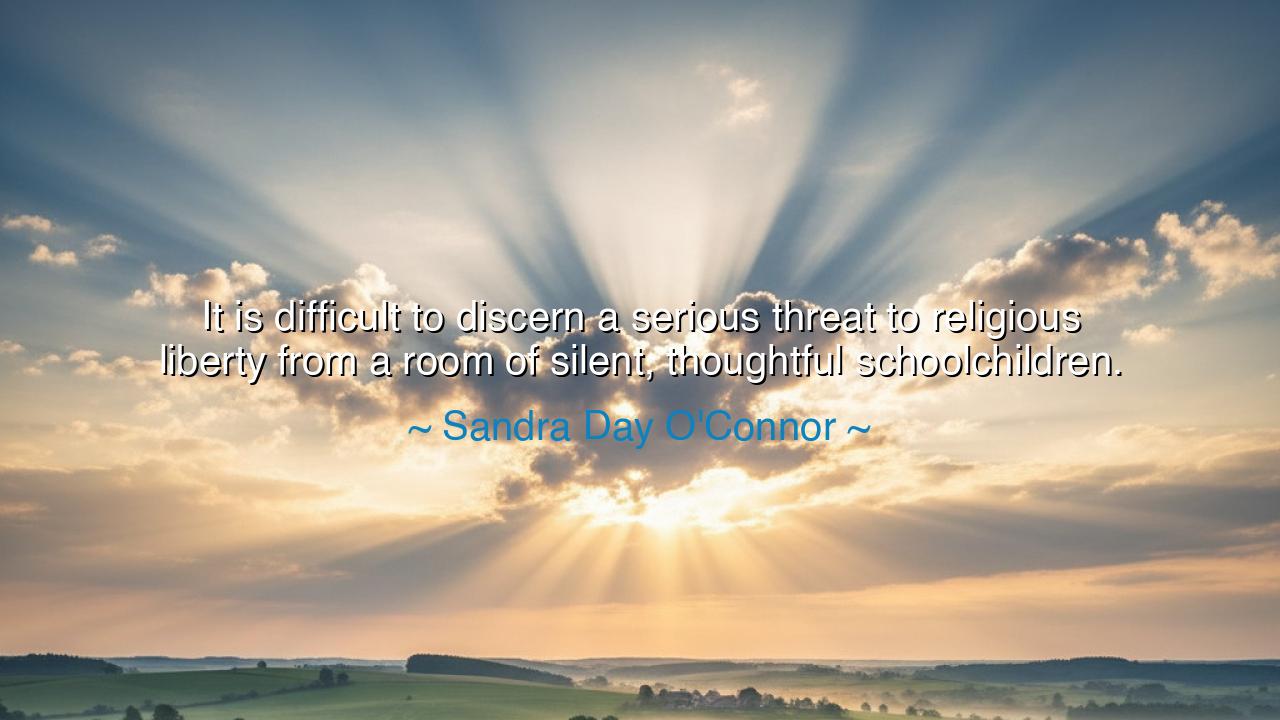
It is difficult to discern a serious threat to religious liberty
It is difficult to discern a serious threat to religious liberty from a room of silent, thoughtful schoolchildren.






The words of Sandra Day O’Connor, first woman to sit upon the Supreme Court, shine with clarity and restraint: “It is difficult to discern a serious threat to religious liberty from a room of silent, thoughtful schoolchildren.” With these words she speaks not only as a judge, but as a guardian of balance, reminding us that liberty is not threatened by reverence or reflection, but by coercion and compulsion. In the stillness of children, gathered in quiet thought, there is no tyranny, only innocence.
The ancients also wrestled with the dance between faith and freedom. In Rome, the state demanded sacrifices to its gods, and Christians who refused were cast to lions. That was compulsion, that was a threat to liberty. But when children of Athens sat at the feet of philosophers, listening in silence to Socrates, no one feared their thoughts would oppress the city. O’Connor’s words carry the same wisdom: that liberty does not tremble before silence, but before force.
Consider the battles in America over school prayer. Some cried that even the quietest moment of reflection endangered freedom, that it was a step toward establishment of religion. Yet O’Connor reminded the nation that true danger lies not in the bowed head of a child, but in laws that demand uniformity of worship. A room of children thinking silently—whether of God, or peace, or simply nothing at all—cannot in itself shatter the great wall of religious liberty.
Her wisdom pierces deeper still. In the heart of liberty lies trust—trust that men and women, even children, may think freely without endangering others. To fear their silence is to mistrust freedom itself. O’Connor calls us back to perspective: liberty is a fortress strong enough to endure the quiet reflections of schoolchildren. The true enemies of freedom are intolerance, fanaticism, and compulsion, not the fragile stillness of youth.
Let the generations remember: freedom of religion is not upheld by banishing silence, nor is it lost in a moment of reflection. It is preserved when conscience is free, when faith is neither commanded nor forbidden. O’Connor’s words endure as a lesson to all ages—that the innocence of children, thoughtful and silent, is no threat to liberty, but a reminder of its strength. For liberty is not so brittle that it shatters at a whisper; it is vast enough to hold even the quiet dreams of the young.






TTTy Ty
O'Connor’s statement seems to suggest that as long as there’s no disruption, religious liberty is safe. But what if disruption isn’t always the right measure? Could silence be a form of conformity that undermines students' freedom to express their beliefs? If students aren’t allowed to freely discuss or practice religion due to unspoken rules or subtle pressure, does that still count as a threat to their liberty?
DHDuyen Ho
I think this quote makes a valid point, especially when considering the context of modern schools where religious discussions can be tricky. But could the 'silent, thoughtful' children actually be a sign of schools successfully fostering respect for all beliefs, rather than a sign of suppression? If the atmosphere is one of inclusion and respect, perhaps that’s a true testament to upholding religious liberty in the classroom.
CTVo thi cam thuy
It's interesting how this quote can be interpreted differently depending on one's perspective. For some, a room of quiet students might suggest that their religious freedoms are being respected, but for others, it might signal a suppression of voices. Is it possible that in some cases, silence is a sign that students are too afraid to speak up, possibly due to fear of discrimination or judgment?
TNHoang Trinh Thao Nguyen
Sandra Day O'Connor seems to argue that the absence of conflict in a classroom shows no threat to religious freedom, but I wonder if this perspective overlooks the subtler forms of limitation. Are students being subtly discouraged from practicing or discussing their religion in the classroom, even if no one is directly opposing it? Is there a deeper issue regarding freedom of belief that's being ignored when things seem peaceful on the surface?
Ddatdepzai
This quote reminds me of the idealized notion of a quiet, respectful classroom. It raises a question: if there are no overt conflicts or disruptions, can we assume that all students are receiving their right to religious freedom? Or is it possible that the absence of vocal expression might indicate a lack of opportunity or encouragement to freely practice and share religious beliefs?